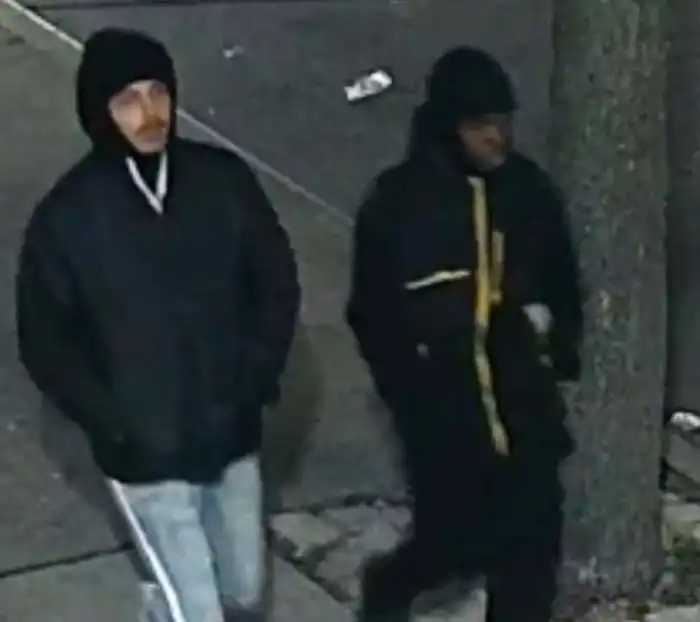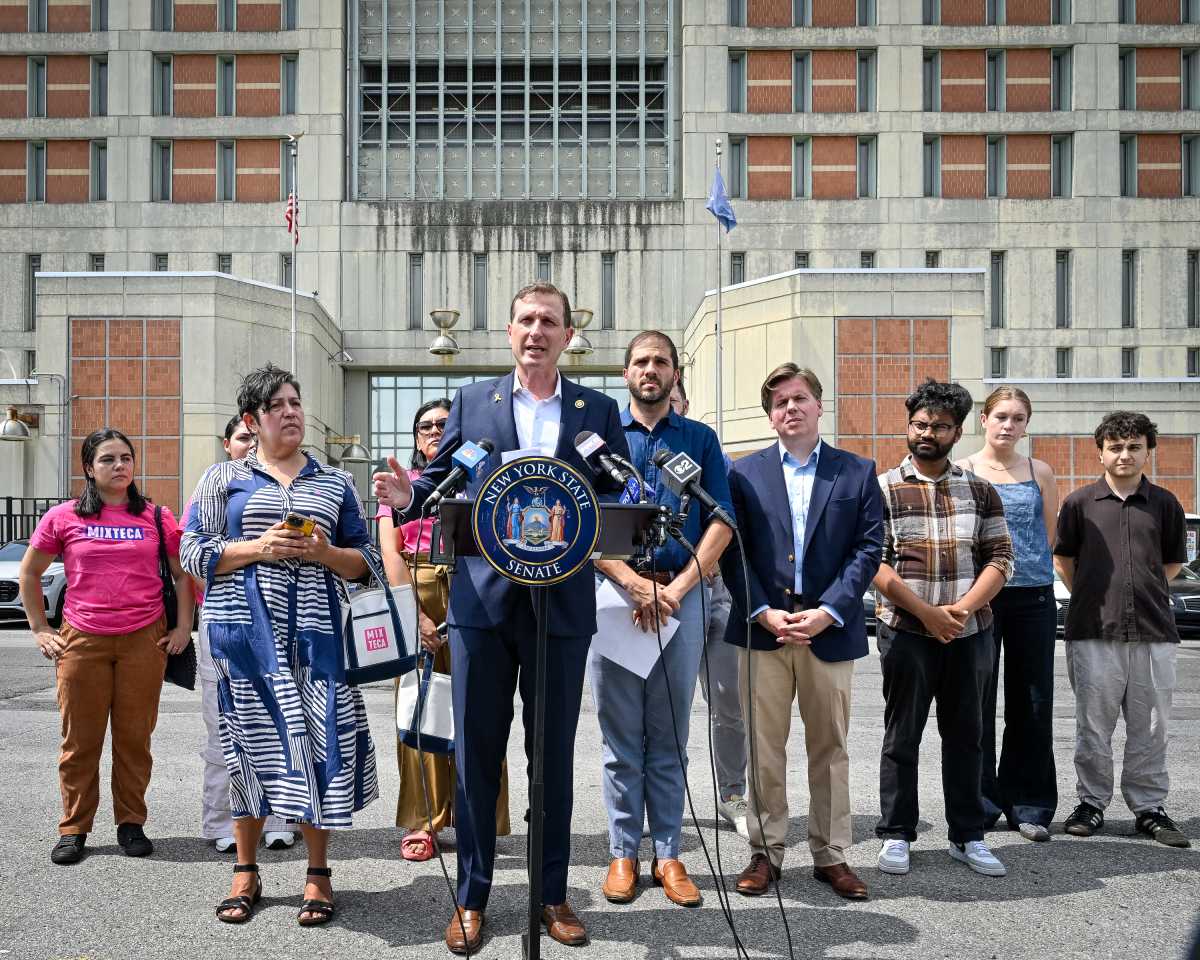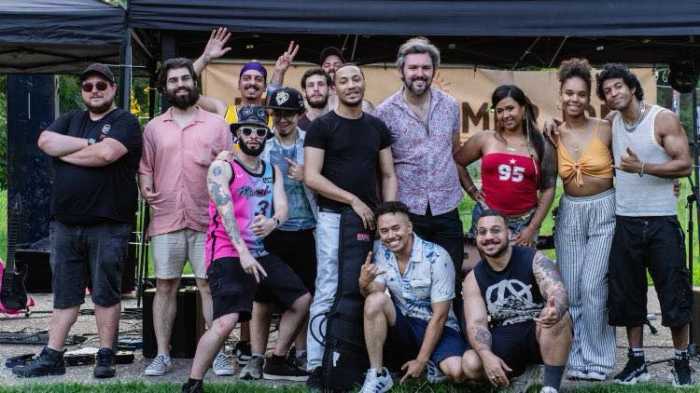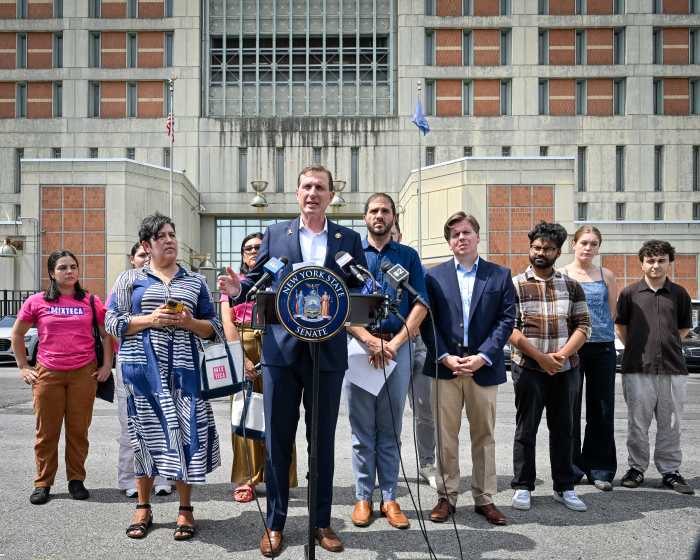By Patricia Fieldsteel
My friend Arthur, known in my Villager columns as “Arthur from across the street,” and I e-mail each other daily. Now that I live in Provence, I suppose you could say, he’s “Arthur from across the ocean,” but we still talk as if we were just across Jane St. Arthur usually begins by describing his day. He also fills me in on the latest Jane St. news, which to most Jane Streeters is THE ONLY news worth bothering about. Being a cosmopolitan fellow, Arthur often strays off Jane St., even venturing north of 14th St. and south of Houston, St., that is. Last week he described one of his forays into foreign regions: “Tonight I walked around the neighborhood to kill 20 minutes or so and found myself in the Meatpacking District at about 10 p.m. — it’s difficult to describe the crowds of young people milling, eating, standing on lines to get into places, and on a Thursday yet.” This got me to thinking about the only “meatpacking district” I ever knew, back when it was still called the Meat Market and dealt only in raw meat, human as well as animal.
As I’ve written in The Villager before, this was not a part of town you entered at night if you valued your life. It was downright dangerous. Before the 1980s — when I worked with prostitutes and got to know the transgendered working girls in the area — I never ventured into this area after dark and rarely, if ever, during the day. When I walked my dog late at night, I would see people headed for the Meat Market. How did I know they were headed for the Market? At midnight in early March, a woman clad only in black leather hot pants, a black leather bra, chains, black fishnet stockings and black stiletto heels walking a crawling, groveling man attired only in black leather bikini briefs at the other end of a leash and dog collar (black leather with studs, of course) wasn’t rushing to get to the Beatrice Inn before it closed. For decades, the pre-Civil War Triangle Building was a location for esoteric clubs catering to very particular adult tastes. First was The Barn, a men-only dive where all clothing could be checked at the door; this was followed in the mid-1970s by The Sewer, in the dungeon-like basement. The last and best known were the Hellfire, the Manhole and J’s Hideout. There was a sign on the street over the entrance that read “Abandon Hope All Who Enter Here.” Different nights at the Hellfire were for different flavors: S & M, S & B, fetishists, hetero, homo, mixed; women could enter for free. Frequently, in the early morning when I’d walk my dog, I’d see several leather men in full regalia or a grouping of like-minded fetishists staggering out from the Market after a night of heavy-duty frolics, heading for neighborhood coffee shops to eat bacon and eggs together before heading home. Sometimes I’d discover odd little tableaux. One snowy morning, I was walking my dog near the beginning of Ninth Ave., and there lying in a pristine snowdrift, was a mound of the most beautiful plump blueberries I’ve ever seen; a used condom was delicately placed on top.
The Triangle Building in its grungier days was a favorite of filmmakers. The interior of the Hellfire with its dungeons, cages and torture apparatus was used to shoot a scene in the 1992 killer-thriller “Single White Female,” starring Bridget Fonda and Jennifer Jason Leigh. William Friedkin’s controversial 1980 movie, “Cruising,” featuring Al Pacino and Paul Sorvino, used The Triangle Building for many scenes. During the filming, the surrounding streets were the site of protests by some gays who felt the movie was homophobic and portrayed gays as sex-obsessed perverts. The stalker played by Glenn Close in the chiller-thriller “Fatal Attraction” had an apartment in the building, as did the poet, Richard, played by Ed Harris, who, dying from AIDS, commits suicide from his seedy apartment window in the film version of Michael Cunningham’s novel, “The Hours.” And as any self-respecting “Law & Order” and “Law & Order S.V.U.” fan can tell you, the shows’ dicier murders were frequently shot in the old Market.
Perhaps one of the earliest efforts to soften the area’s dark and dangerous reputation was the introduction around 1979 of a Saturday-morning summer Greenmarket in the cobblestoned square at the junction of Greenwich, Gansevoort and Little W. 12th Sts. where Ninth Ave. begins, the site of the old Peter Warren farmstead. The meatpacking plants were closed on Saturdays. For many Villagers, this was their first venture inside the old Market. During the turmoil-ridden 1970s, when people were fleeing Manhattan in droves, the concept of fresh flowers, fruit, vegetables and farm goods was novel and new. Barry Benepe, a longtime Jane Streeter, and Bob Lewis had started the first Greenmarket only a few years earlier in 1976, and with the city going through serious hard times, bankruptcy, abandonment by the federal government, police scandals, riots, major cutbacks on services and an overall feeling of doom, the tiny farmers’ market growing out of all that offal was a cherished oasis.
There were fish vendors from Shinnecock Bay and Montauk and several organic farmers, a concept that at the time was fairly new. There was a woman who made jam and cookies, breads and cakes; there was a man who sold plants he raised on his farm in Suffolk County and then there was the flower man from near Brookhaven, L.I. He would arrive with great buckets of wildflowers set out on the streets’ Belgian-block stones — black-eyed Susans, sweet everlasting, goldenrod, turk’s cap lilies, Queen Anne’s lace, fleabane, thistles, steepleweed, daisies, nodding trillium, sessile bellwort, yarrow, butterfly weeds and mullein. For $3 you could pick an enormous bouquet of your own, enough to fill four large vases. He would talk of his farm, of walking in a field of black-eyed Susans and daisies at sunset the night before, picking flowers for the Market, the sun casting a pink and golden glow over the flowers, and how, as the sun sank and he turned to go home, his arms full, a white owl suddenly had flown out of the woods, calling out to the night as it flew low over the field, coming gently close to his head. Every week there was another story, another assortment of exotic flowers and for those of us who lived in the West Village during that difficult time, this too became part of the Meat Market’s unusual allure.




























